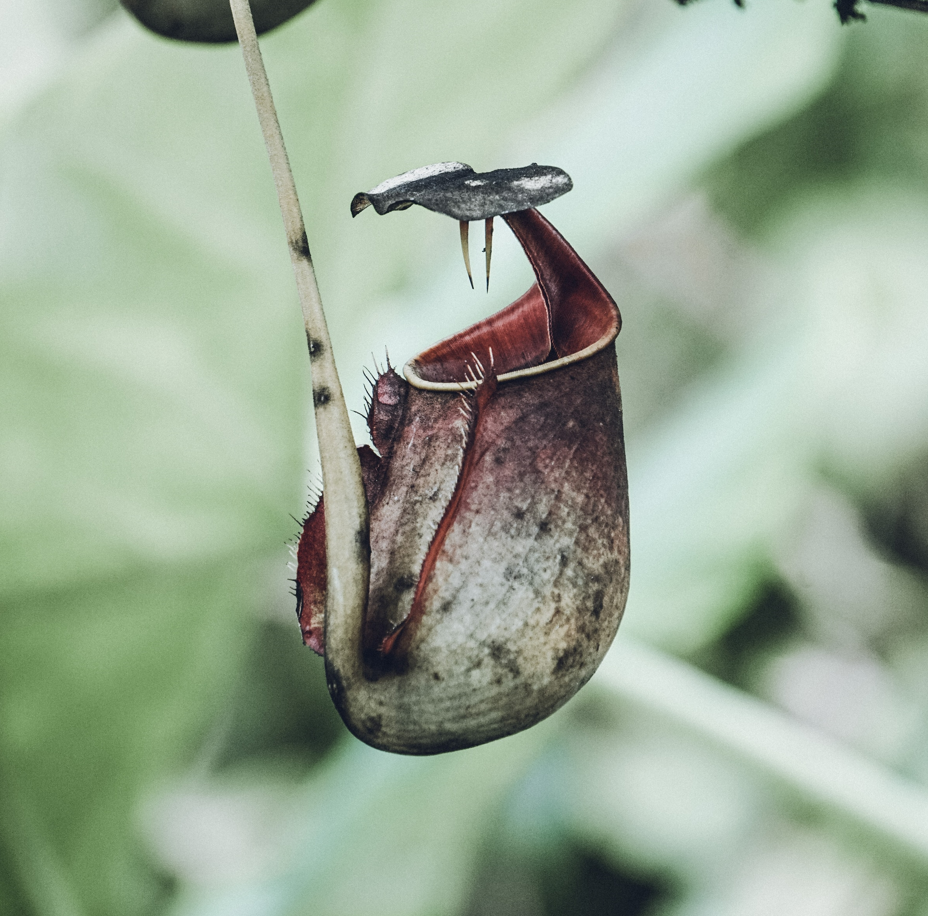If you’ve ever had the childish urge to stick your pinky in a pitcher plant, you’ve perhaps also wondered whether a carnivorous plant could ever “eat” a human, should they be so inclined. Fortunately, someone has done the science (in the most ethical way possible).
Barry Rice, a professional carnivorous plant grower, runs The Carnivorous Plant FAQ blog. Against the advice of his “mortified” wife, he set out to explore the question on every botanist’s brain: Can Venus flytraps digest human flesh?
To find out, he fed his Venus flytraps some hunks of skin that had been peeled off his toes due to an athlete’s foot infection. He cut four equally sized sheets of skin and placed them in the jaws of four Venus flytrap plants.
A week on, he pried open the mouths and documented how the contents had fared. Rice claims he had expected the chunks to have remained relatively intact, but he was pleasantly surprised to be proved wrong: the chunks were almost completely digested.
“What was left no longer had much cohesion, but was gooey and slimy, like little boogers. Uck! Uck! Uck! And what is with the weird hue shift to bacon color?? Uck! Uck! Uck! Iä! Iä,” he wrote on the blog.
So, yes: Venus flytraps can happily chow down on small pieces of freshly caught human tissue. However, there are some pretty understandable limitations to this DIY experiment. Firstly, only one type of tissue, skin, was tested and this provides us with no insight into whether it could break down something tougher, like bone and cartilage. Secondly, there is the issue of size and scale. Consuming a few skin flakes is very different from guzzling down a fully grown person.
These drawbacks aside, there are plenty more avenues to explore in this thought experiment. There are around 630 species of carnivorous plants known to science, as per the Natural History Museum London, and perhaps more that lay unreported in the depths of rainforests.

Pitcher plants are a type of carnivorous plant with specialized leaves that trap insects within a bucket of digestive fluids.
Image credit: Juan Domenech/UnSplash
Most of the brawnier species do not feature jaws like the Venus flytrap or sticky pads but are pitcher plants, defined by their specialized modified leaves that have curved up to form a bug-trapping bucket filled with digestive liquid.
The giant montane pitcher plant (Nepenthes rajah) is often considered to be the very biggest of the bunch, with one record-breaking specimen measuring up to 41 centimeters (16 inches) tall, enough to hold liters of digestive fluids.
Native to Borneo, this species is known to consume forest-scuttling vertebrates like frogs, geckos, and salamanders. They are also known to lure unsuspecting mice and rats into the pitcher, where they drown, and become digested by its juice. This suggests it might be theoretically possible to break down most of the tissues of a vertebrate mammal – bones, guts, muscle, fat, and all.
As it stands, however, no species of carnivorous plant would be able to contain a whole human corpse, unless we count Audrey II from Little Shop of Horrors.
Carnivorous plants appear to have evolved to a limited size because consuming prey beyond a certain mass is more effort than it is worth. These specialized plants evolved their taste for animals to help them survive in nutrient-lacking environments. They still rely on photosynthesis and their root system like other plants, but they need to digest animals to obtain vital nutrients like nitrogen, phosphate, potassium, iron, and manganese, which might not always be readily available in the soil.
As tasty as we might be, carnivorous plants simply don’t need the 143,771 calories in a human body, not to mention the plate-loads of protein and fat. Even if they wanted to, it would take months and months to break down the body, by which time a mushy cesspit of decomposing bacteria would have gathered within the plant’s belly, almost certainly killing it in the process.
In a nutshell, you don’t need to worry about becoming the breakfast of carnivorous plants. While they have the potential to break down many of our tissues, it would be too time-consuming and costly to hoover up a human.
Well, there goes my idea of a murder mystery novel set in a Garden Center…
Source Link: Could A Carnivorous Plant Eat A Human?